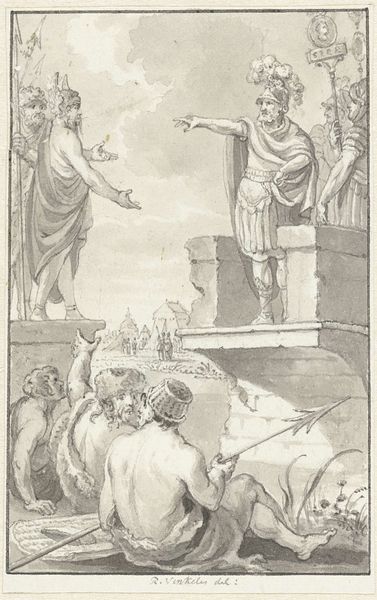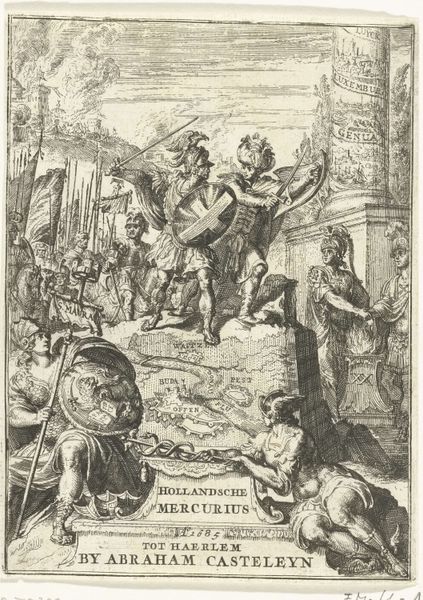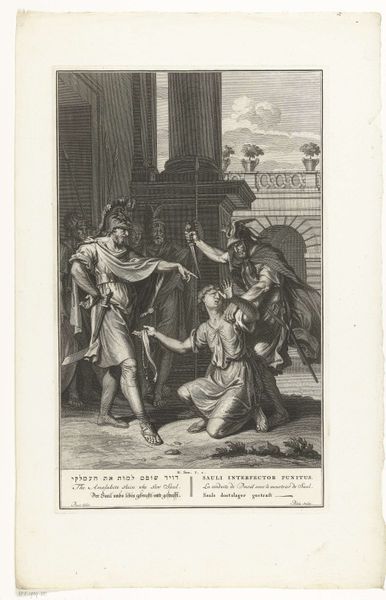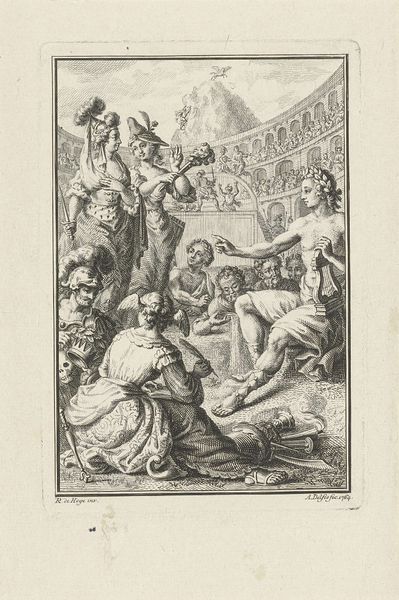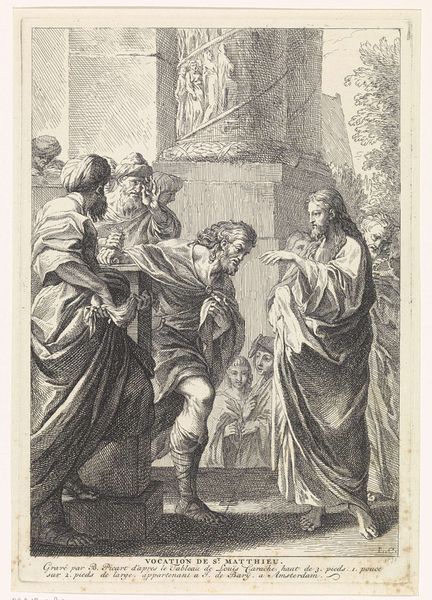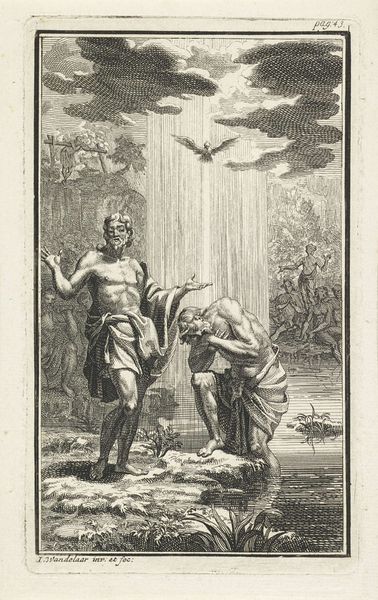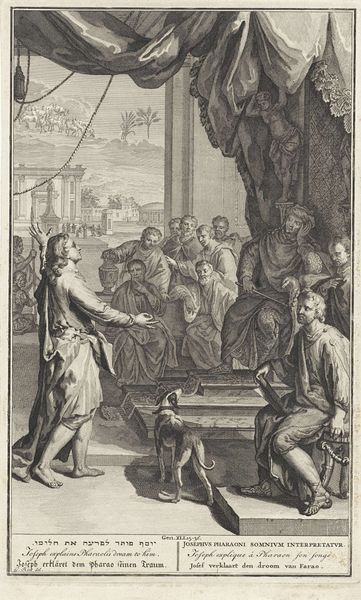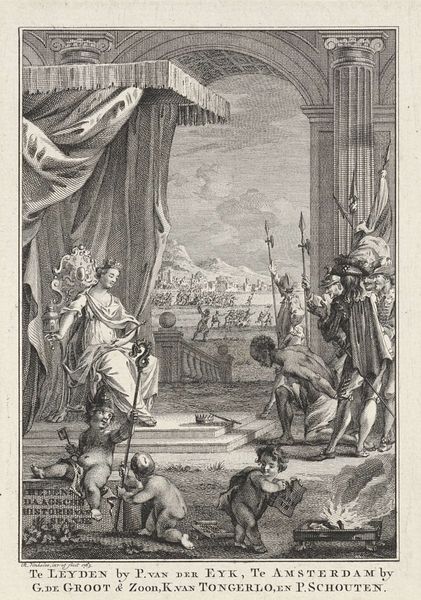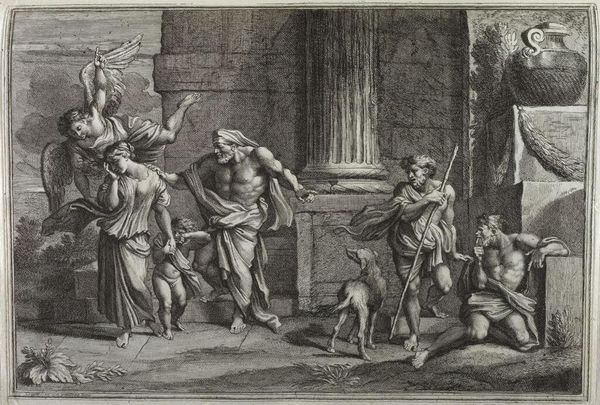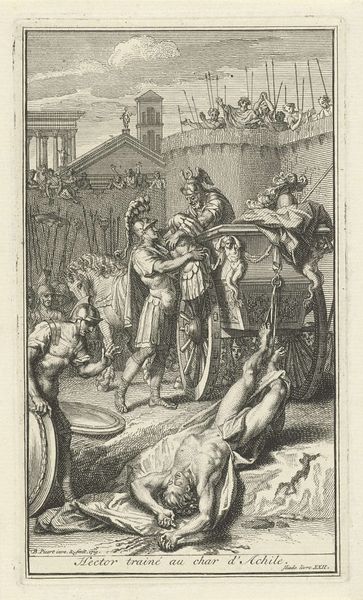
Civilis en Cerialis onderhandelen op de afgebroken brug, 69-70 1791 - 1810
0:00
0:00
ludwiggottliebportman
Rijksmuseum
print, engraving
#
neoclacissism
# print
#
figuration
#
line
#
history-painting
#
academic-art
#
engraving
Dimensions: height 204 mm, width 130 mm
Copyright: Rijks Museum: Open Domain
Curator: This print, dating from 1791 to 1810, is by Ludwig Gottlieb Portman. It's entitled "Civilis en Cerialis onderhandelen op de afgebroken brug, 69-70" which translates to "Civilis and Cerialis negotiate on the broken bridge, 69-70." It’s an engraving depicting a historical event. Editor: My initial impression is one of stark contrast. We have these rigidly posed, almost theatrical figures set against what seems to be a chaotic, almost primitive scene. The very fine lines of the engraving gives everything an ethereal quality, but I feel no warmth. Curator: The composition is quite deliberate, a classical staging of opposing forces, wouldn’t you say? The broken bridge acts as a visual and symbolic divide. Editor: Absolutely. I see it as a clear demonstration of power structures and resource division. The broken bridge emphasizes the negotiation taking place. The material context surrounding that bridge—who built it, the labor involved, and the resources used—are vital to the narrative. Curator: Precisely. It represents a moment of transition, perhaps even a power vacuum. Note how Portman utilizes line to delineate social hierarchy; the Romans are crisply defined, while the Batavians appear softer, more blended into the landscape. The meticulous detail given to their armor and ornamentation speaks to a celebration of imperial power, very Neoclassical. Editor: Yet, despite the apparent focus on the Roman figures and classical idealism, my attention keeps returning to the figures seated on the bank, huddled together. What raw materials are in their garments? This engraver gives the fur worn by the men an exceptional depth, indicating something beyond simple adornment. Curator: An astute observation. Consider too how Portman, though adhering to Neoclassical conventions, still allows for a sense of drama through his contrasting use of light and shadow, emphasizing the gravity of the negotiations. Editor: The materials employed, specifically print, allow for the mass distribution of this image. It is not a unique artwork made using painting or even drawing; this would certainly disseminate this version of history efficiently across a specific culture. I would be intrigued to understand how these historical engravings would reinforce national identity and influence perspectives on governance and social norms. Curator: That adds another rich layer to its interpretation. This print provides an understanding not only into ancient historical accounts but also reveals how later eras appropriated and reshaped them for their own didactic needs. Editor: It reminds us of art’s critical role in shaping cultural memory and influencing perspectives on authority, labor, and how power dynamics can influence interpretations.
Comments
No comments
Be the first to comment and join the conversation on the ultimate creative platform.

